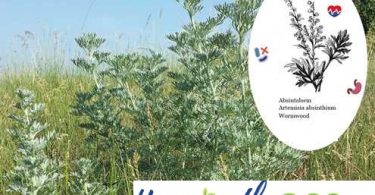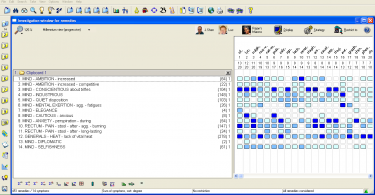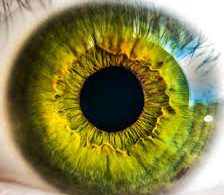A headache is a pain or discomfort in the head, scalp, or neck. Serious causes of headaches are extremely rare. Most people with headaches can feel much better by making lifestyle changes, learning ways to relax, and occasionally by taking medications.
Causes
The most common headaches are probably caused by tight, contracted
muscles in the shoulders, neck, scalp, and jaw. These are called tension
headaches. They are often related to stress, depression, or anxiety. Overworking, not getting enough sleep, missing meals, and using alcohol or
psychotropic drugs can make one more susceptible to them. Headaches
can be triggered by chocolate, cheese, and monosodium glutamate (MSG).
People who drink caffeine can have headaches when they don’t get their
usual daily amount.
Other common causes include:
- Holding your head in one position for a long time, like at a computer,
microscope, or typewriter - Poor sleep position
- Overexerting yourself
- Clenching or grinding your teeth
Tension headaches tend to be on both sides of your head. They often start at the back of your head and spread forward. The pain may feel dull or squeezing, like a tight band or vice. Your shoulders, neck, or jaw may feel tight and sore. The pain is usually persistent, but does not get worse with activity.
Migraine headaches are severe headaches that usually occur with other symptoms such as visual disturbances or nausea. The pain may be described as throbbing, pounding, or pulsating. It tends to begin on one side
of your head, although it may spread to both sides. You may have an ‘aura’
(a group of warning symptoms that start before your headache). The pain usually gets worse as you try to move
around.
Other types of headaches:
Cluster headaches are sharp, extremely painful headaches that tend to occur several times per day for months and then go away for a similar period. They are far less common.
Sinus headaches cause pain in the front of your head and face. They are due to inflammation in the sinus passages that lie behind the cheeks, nose, and eyes. The pain tends to be worse when you bend forward and when you first wake up in the morning. Postnasal drip, sore throat, and nasal discharge usually occur with these headaches.
Headaches may occur if you have a cold, the flu, fever, or premenstrual
syndrome. If you are over age 50 and are experiencing headaches for the first time, a condition called temporal arteritis may prove to be the cause. Symptoms of this condition include impaired vision and pain aggravated by chewing. There is a risk of becoming blind with this condition. Therefore, it must be treated by your doctor right away.
Rare causes of headache include:
- Brain aneurysm, a weakening of the wall of a blood vessel that can
rupture and bleed into the brain - Brain tumor
- Stroke or TIA
- Brain infection like meningitis or encephalitis
I shall be discussing a few cases of headaches that I was able to cure in
my practice.
Case 1
This is a case of a man with Parkinson’s disease who was constitutionally on
the remedy Causticum Hahnemanni. He complained about a headache that
had been there for the past 3 months. The constitutional remedy was unable
to tackle the symptoms of his headache though his Parkinsonism was much
better with the Causticum. The most important symptom was that the pain
started from the forehead just above the eyes and extended to the spine,
or the pain could start in the cervical spine and extend to the occiput, vertex
or to the frontal region.
There was also pressing, heavy pain in and around the forehead and eyelids. The eyelids sometimes closed involuntary. The whole phenomenon
was aggravated by motion, exertion, walking and stooping. The pain in the
cervical region was the most characteristic especially going all the way
down to the spine.
I tried many remedies like Bryonia, Gelsemium and Nux vomica but
it gave no relief to the patient. The pain was sometimes so violent that he
had to take 1 pain killer 3 times a day, but even then the pain would only reduce by 50-60 per cent, never leaving completely.
I was looking for a remedy that had a marked action on the brain as he
was suffering from Parkinsonism, and at the same time having its sphere of
action on the cervical spine.
I took the rubrics:
- Head, pain pressing
- Head, pain violent
- Head, pain neuralgic
- Head, pain motion aggravates
- Head, heaviness
- Eyes, heaviness lids
With these symptoms I gave him the remedy Oreodaphne Californica
30CH. Oreodaphne Californica is a Mountain laurel, also known as balm
of heaven. It is one of the most useful remedies for migraines affecting
the fronto-occipital area. Dr J. Murray proved the remedy on himself and
his friends by taking the tincture of the leaves; immediately they suffered from fronto-occipital headaches that were worse from movement and better
by rest.
After using this remedy on a few patients it quickly became a favorite
remedy in my practice for cervical spondylosis and for headache due to
hypertension.
Oreodaphne comes very close to another remedy Picricum acidum
Picricum acidum also has a fronto-occipital headache, with a pressing type
of pain that extends all the way to the cervical spine.
Another remedy that closely matches Oreodaphne is Onosmodium
virginianum, which shares the frontooccipital headache, pressing type of
pain and the heaviness.
CASE 2
This is a case of a woman who was a company secretary in a multinational
company; she came to me with premenopausal complaints and migraine.
With Sepia she felt much better, most of her symptoms got completely ameliorated but after a few months Sepia stopped working. When I again retook the history she now mentioned to me that her boss with whom she worked with was too demanding on her and as a result she always remained in an excited state. When she goes home at the end of the day she feels tired, sad and depressed. On weekends when she has a holiday she develops a peculiar neuralgia of the head that begins in the cervical spine, goes up all the way to the occiput, vertex and frontal region and ends up just above the right eye. The pain is accompanied by nausea. It’s a sort of bursting sensation as if there is a lot of pressure within the head, and this pressure is going to explode.
Any mental or physical exertion, any pressure, jerks, or jars would aggravate
the pain. It was a sharp shooting neuralgic pain, but here again the area was occipito-frontal and just above the right eye. She complained that her eyes during the neuralgia feel quite distended. During the neuralgia she also complained of nausea. In general she was constipated, stools were
hard and dry, and she had a past history of recurrent urinary tract infection.
I repertorized the case and selected the remedy Prunus spinosa 30CH.
The remedy removed most of the symptoms within the first week, and
within several weeks all the symptoms disappeared.
Prunus spinosa comes from the Rosaceae family; it is a useful remedy
for afflictions of the eyes. The most unique thing that I have seen in my 30
years of practice is the type of pressing pain. It is like a pain that presses out
or shoots out from the place of origin. For example, if there is a pain in the
nose, ears or teeth, the patient feels as if the nose will come out of it’s socket, the ears will come out of their sockets, or the teeth will come out. There is a sense of shooting pain within out. The pain occurring in and around the eyes have led me to use this remedy very successfully, especially in glaucoma, retinitis and iridocyclitis.
A very interesting symptom I learnt of when I read the case of Dr
Adolf Lippe was the symptom: ‘breath always seems to remain sticking in the pit of the stomach.’ This symptom, together with pain as if sprain in left
ankle, led Dr Adolf Lippe to make a remarkable cure in the following case.
A young lady of 16 years jumped from the carriage whilst the horse was running away and sprained her ankle. The left ankle and foot swelled, and as the swelling abated her breathing became rapid with great oppression and constant desire to take a long breath. She felt as if the air inhaled did not reach the pit of the stomach, so she would yawn and try to take deep inspirations.
Another very good use of this remedy is in herpetic neuralgia as it has marked stitching and stinging pain in and around the intercostal region. In old people I have seen that the pressure of flatulence on the urinary bladder produces severe cramps in the bladder and the patient is obliged to double up. In old people with enlarged prostate the patient is impelled to pass urine immediately because the urine comes all the way to the tip of the glans penis and then returns causing the most violent pain in the urethra.
CASE 3
This was a case of an elderly man who suffered from multi infarct dementia
and was under my care. I had prescribed Opium very successfully
for his dementia but for the past few months he complained of migraine.
When I examined his blood pressure it was 140/90 mm Hg but what I observed was that his renal parameter was gradually deteriorating, his creatinine had reached 1.6 and his albumin in the urine was +1.
Even though he was an old person he still had a strong desire for sex,
and in his past he had enjoyed sex quite excessively. He was very anxious and nervous about his future; he easily became confused in a crowd; he
was a greedy person who did not like spending money even though he was
financially secure. He had a marked irritability with the headache; the head pain was described as a constriction around the forehead area with
heaviness around the occipital area.
The headaches starts as soon as he lies down, when he reads the newspaper or magazine or takes part in any intellectual discussion. Any noise irritateshim and his headache is worse in a
warm room.
I was more worried about his high creatinine level than that he had not
had a history of suffering this kind of headache in the past. I regularly examined his urine and on a few occasions found that he was passing sediment in the urine, and that the urine was dark. Based on these symptoms I prescribed Zincum picricum. Zincum picricum I have found is a very useful remedy for people who have headache together with high creatinine levels, together with the kind of mental symptoms I had observed in this patient his greedy nature, his fears and anxiety, his confusion and strong desire for sex. These are very useful indications for the remedy Zincum picricum,and given repeatedly brought down his creatinine level back to normal along with complete disappearance of his
head symptoms.
Zincum picricum is one of the known remedies for chronic occipital headaches; as soon as the person lies down or puts his head on the pillow
the typical headache starts; it’s a dull heavy type of headache. In some people the headache can also come after sexual excess.
Source: The Homoeopathic Heritage, December 2009





